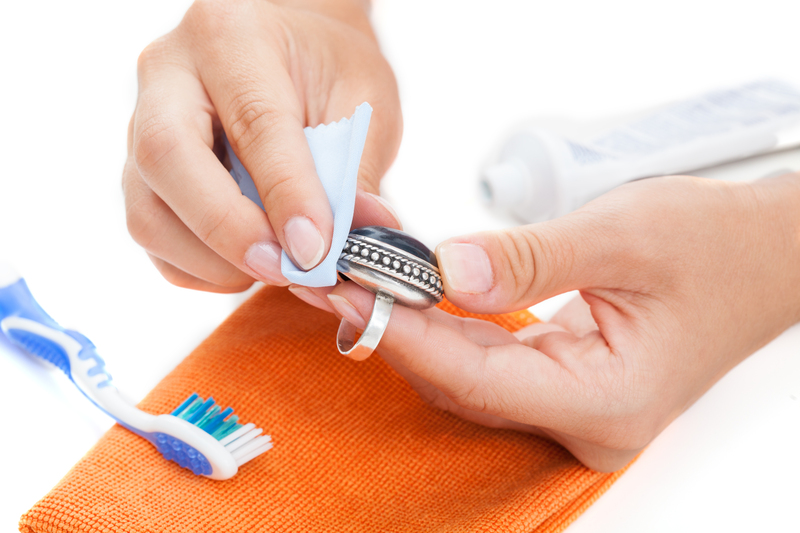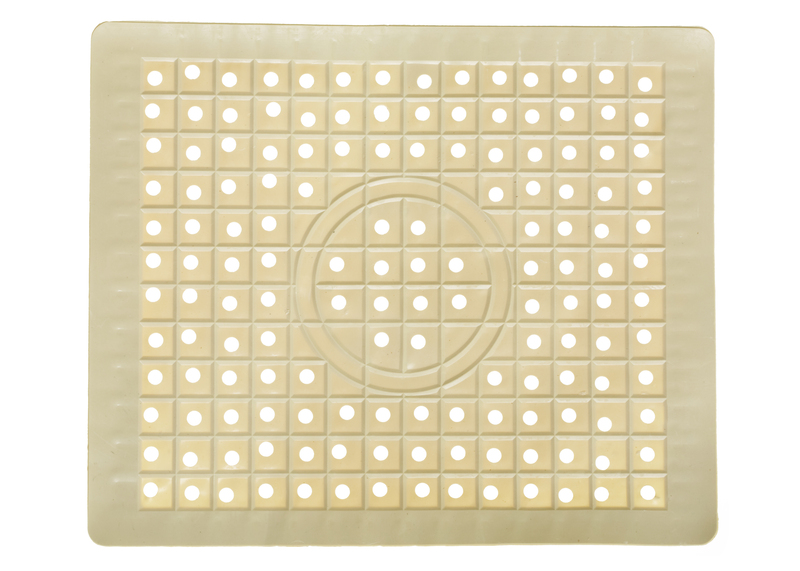How to Effortlessly Clean Burnt Residue from Your Stovetop
Posted on 27/09/2025
How to Effortlessly Clean Burnt Residue from Your Stovetop
Having a spotless and gleaming stovetop not only makes your kitchen look beautiful but also enhances the cooking experience. Unfortunately, burnt-on food, grease, and stubborn stains can make cleanup challenging. If you've ever struggled to remove burnt residue from your stovetop, you're not alone. This comprehensive guide will show you how to effortlessly clean burnt residue from your stovetop using effective, safe, and easy methods. Read on to discover the best strategies, tools, and tips for restoring your stovetop to its original glory.

Understanding Burnt Residue on Stovetops
Burnt-on residue on a stovetop can come from a variety of sources--boil-overs, splattered oil, spilled sauces, and more. Over time, these stains can harden and become difficult to remove with simple wiping. Recognizing the type of stovetop you have--gas, electric coil, or glass-ceramic--will help you choose the best cleaning method.
- Gas stoves: Feature removable grates and burners.
- Electric coil stoves: Have liftable coils and drip pans.
- Glass-ceramic (flat-top) stoves: Present a smooth surface, requiring careful cleaning to avoid scratching.
*It's crucial* to follow methods that suit your stovetop type, ensuring thorough cleaning without risking damage.
Preparation Before Cleaning a Burnt Stovetop
1. Turn Off and Cool Down
*Safety first!* Always ensure your stovetop is completely turned off and cooled before you begin cleaning. Cleaning a hot surface can result in burns, and certain cleaning agents may emit fumes when heated.
2. Gather Essential Cleaning Supplies
- Baking soda
- White vinegar
- Hot water
- Mild dish soap
- Microfiber cloths
- Non-abrasive scrubbing pads or sponges
- Plastic or silicone spatula (for gentle scraping)
- Razor blade or cooktop scraper (only for glass stovetops)
- Rubber gloves (to protect your hands)
Having the right tools at your disposal makes the process easier and more efficient.
How to Easily Clean Burnt Residue from Different Types of Stovetops
Gas Stovetop Cleaning
-
Remove Grates and Burner Caps
Carefully lift the grates and burner caps off your stovetop. Soak them in a sink filled with hot, soapy water while you focus on the stovetop surface.
-
Treat the Burnt Residue
Sprinkle baking soda directly onto the burnt areas. Add a little water to create a thick paste. Let this mixture sit for 15-20 minutes--this allows the baking soda to break down burnt food and grease.
-
Scrub Gently
Use a non-abrasive scrubbing pad or sponge to work the paste into the residue in a circular motion. Stubborn areas may require extra attention. For hard-to-reach spots, use an old toothbrush.
-
Wipe and Rinse
Remove the residue with a damp microfiber cloth. If any burnt-on food remains, repeat the process as necessary.
-
Clean Grates and Burner Caps
After soaking, scrub grates and caps with a brush or sponge. Rinse, dry, and return them to the stovetop.
Electric Coil Stovetop Cleaning
-
Unplug or Turn Off
*Safety alert!* Always unplug the stove or turn off its power source before cleaning the coils.
-
Lift and Clean Coils
Remove the coils (if possible) and clean them with a damp cloth. Never immerse the electrical connections in water.
-
Deal with Drip Pans
Take out the drip pans and soak them in a mixture of hot water, dish soap, and baking soda for at least 30 minutes. Scrub away burnt-on residue, rinse, and dry thoroughly.
-
Clean the Main Surface
Sprinkle baking soda over burnt areas, spray with vinegar, and watch it fizz. Let it sit for 15-20 minutes, then scrub and wipe clean.
Glass-Ceramic or Flat-Top Stovetop Cleaning
-
Apply Baking Soda and Vinegar
Carefully sprinkle baking soda over the burnt spots. Spray a light layer of vinegar on top and let it fizz for 15-20 minutes.
-
Wipe with a Damp Cloth
Use a soft, damp microfiber cloth to gently wipe away softened residue.
-
Scrape Hardened Residue
For stubborn burnt-on stains, gently use a cooktop scraper or razor blade held flat against the surface (never at an angle). Be extremely careful to avoid scratching.
-
Polish the Stovetop
Wipe the surface with a clean, dry cloth for a streak-free shine.
Natural and Chemical Solutions for Effortless Burnt Residue Removal
Homemade Cleaners
-
Baking Soda Paste
Mix three parts baking soda to one part water to create a thick paste. Apply it generously, let it sit for 15-30 minutes, then scrub and rinse away.
-
Vinegar Spray
Fill a spray bottle with equal parts white vinegar and water. Spray on burnt marks to break down residue and disinfect the area.
-
Lemon Juice Power
Lemon juice has natural degreasing abilities. Rub a cut lemon over burnt food stains, then sprinkle with baking soda for a fizzy lift.
Commercial Stovetop Cleaners
- Choose products labeled safe for your stovetop type.
- Look for non-abrasive formulas to avoid surface damage.
- Follow the manufacturer's instructions carefully.
Preventing Burnt Residue Buildup on Your Stovetop
*Prevention* is always better than cure! If you want to avoid tough scrubbing sessions, here's how you can reduce and prevent burnt-on residue on your stovetop:
- Clean spills immediately: Wipe up spills and splatters as soon as it's safe. The longer they sit, the harder they become to remove.
- Use splatter guards: These handy covers control grease and sauce splashes when cooking.
- Avoid overflows: Try not to overfill pots and pans to minimize the chances of messy boil-overs.
- Regular cleaning routine: Give your stovetop a daily wipe and a weekly deep clean to keep buildup at bay.
- Use the right cookware: Flat-bottomed pans make even contact, reducing hotspots and burnt food.
Special Tips for Stubborn Burnt Residue on Your Stovetop
Even with regular cleaning, some burnt-on food and stains can be terribly persistent. Here are advanced techniques for removing stubborn burnt residue from your stovetop:
- Soak with Wet Towel: Lay a hot, wet towel over the burnt area and let it sit for 30-45 minutes. This softens very hard residue, making it easier to wipe away.
- Use a Stovetop Razor Blade: For glass-ceramic surfaces only, a flat razor blade can carefully lift off stuck-on debris. Never dig or pry at an angle--gentle, straight movements are key.
- Repeat if Needed: Heavier stains may require repeating the baking soda and vinegar treatment several times for complete removal.
- Try a Magic Eraser: *Melamine foam sponges* can tackle marks that resist conventional scrubbing (test on a small area first).
*Patience pays off.* If the residue is very thick, spend more time soaking and less time scrubbing to avoid damaging your stovetop surface.
Avoid These Common Cleaning Mistakes
- Don't use steel wool or abrasive pads on glass or ceramic surfaces -- they cause scratches that are difficult to repair.
- Never use harsh chemicals like oven cleaner unless explicitly recommended by your manufacturer.
- Avoid letting moisture seep into burners or electrical components--electrical parts can short out or become dangerous.
- Don't rush: Letting your cleaning solutions soak in gives far better results than trying to scrub away burnt-on residue immediately.
Benefits of Using Natural Cleaning Methods
- Safe for your family: Baking soda and vinegar don't leave behind harmful residues.
- Environmentally friendly: Avoids unnecessary chemical waste.
- Cost-effective: Household ingredients save you money over specialized products.
*Bonus tip:* These methods are also kind to pets and minimize allergy triggers.

Frequently Asked Questions: Cleaning Burnt Residue from Stovetops
How do you remove burnt residue without scratching the stovetop?
Use non-abrasive sponges and a mild baking soda paste. For glass cooktops, rely on a flat razor blade scraper used with care.
Are there commercial cleaners safe for ceramic stove tops?
Yes! Look for cleaners labeled specifically for ceramic or glass cooktops. Popular brands offer non-abrasive, residue-free formulas that work well.
What natural ingredient is most effective?
Baking soda is widely recognized as the most versatile and effective ingredient for safely removing burnt residues on any stovetop type.
How often should I clean my stovetop?
A quick wipe after every use and a deep clean at least once a week is recommended to prevent buildup and make cleanups easier.
Conclusion: Achieve a Spotless Stove with Minimal Effort
Learning how to effortlessly clean burnt residue from your stovetop saves time, protects your appliance, and keeps your kitchen looking its best. With the outlined step-by-step methods, homemade and commercial solutions, and essential tips, you can easily remove burnt food, grease, and stains from all cooktop surfaces.
Consistency is key--maintaining a simple cleaning routine will help preserve your stovetop's shine and reduce the chances of future stubborn stains. Whether you're working with a gas range, electric coil, or glass-ceramic surface, these proven techniques ensure a clean, safe, and beautiful cooking area every day.
*Happy cleaning and enjoy your sparkling stovetop!*




